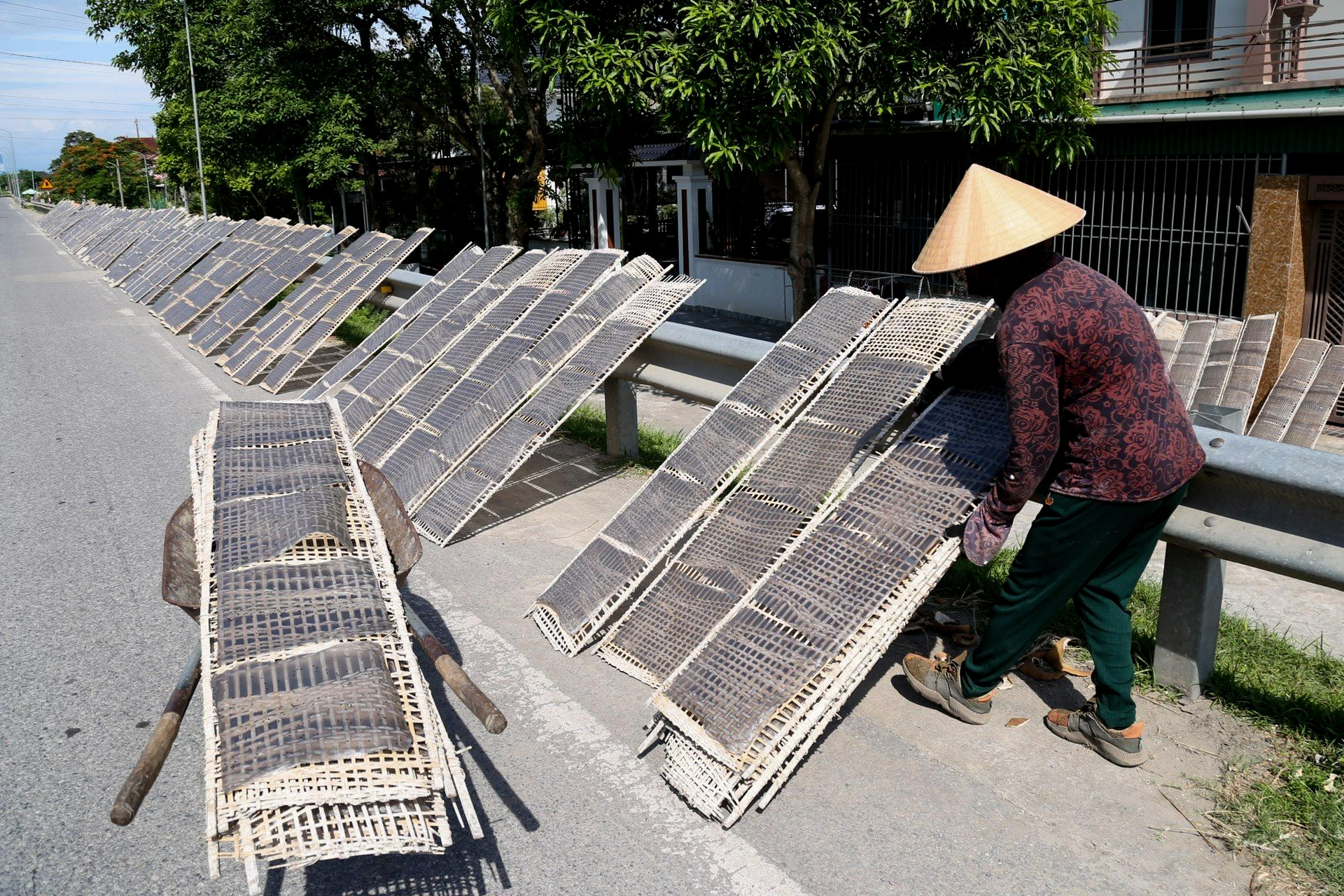
Dong Nhat village (Chau Nhan commune, Hung Nguyen district, Nghe An ) specializes in producing rice paper (also known as dry cake) and peanut candy. If peanut candy is in high demand at the end of the year, the "big season" for rice paper is in the summer, when the temperature is high and the number of sunny hours per day is long.
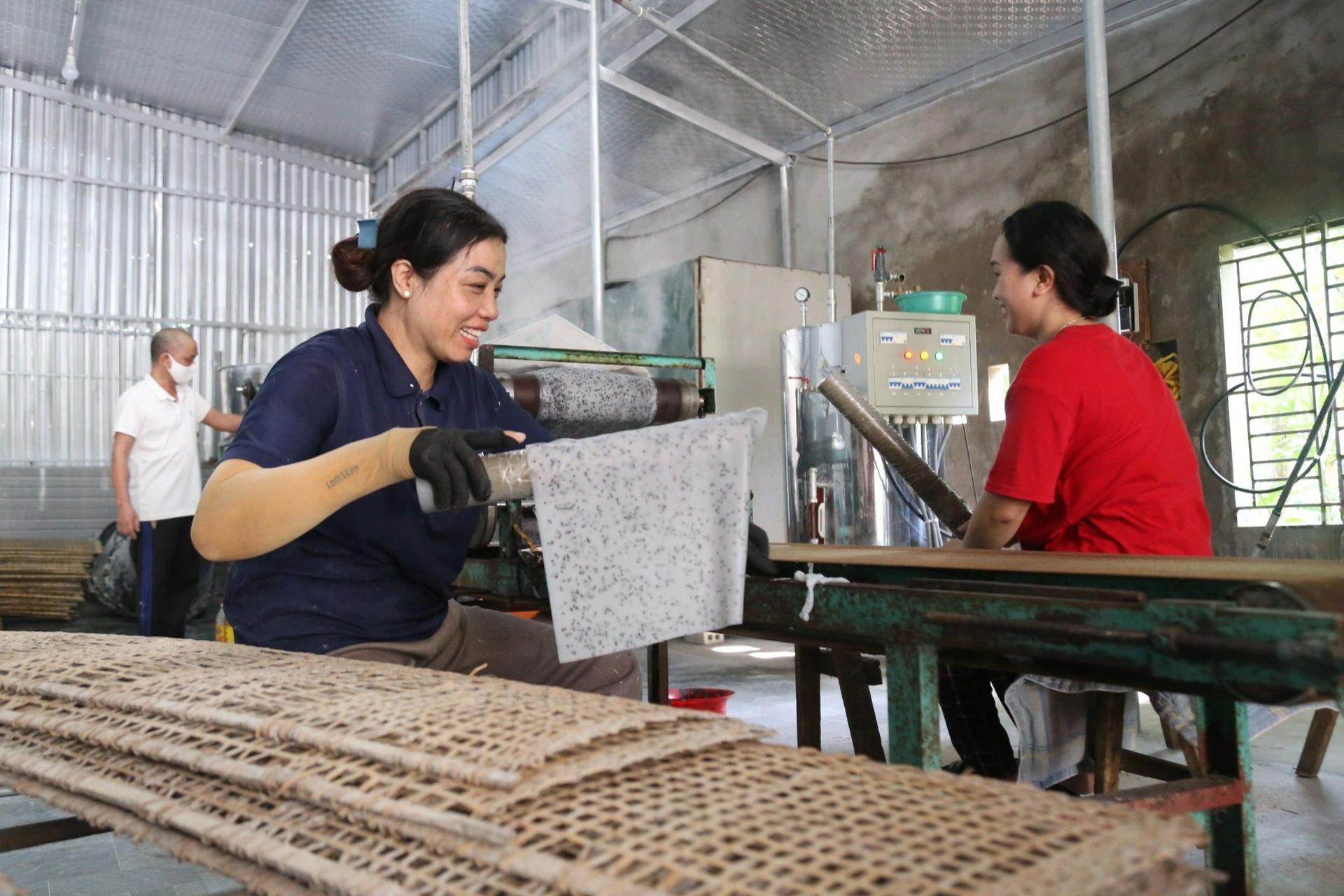
According to Mr. Le Khanh Quang, Chairman of Chau Nhan Commune People's Committee, there are more than 20 households in Dong Nhat village producing rice paper on a medium scale.
"Previously, the rice paper production process was completely manual. Now, people have invested in machinery and automated the process, so productivity is higher, less labor is used, and income has improved compared to before," said Mr. Quang.
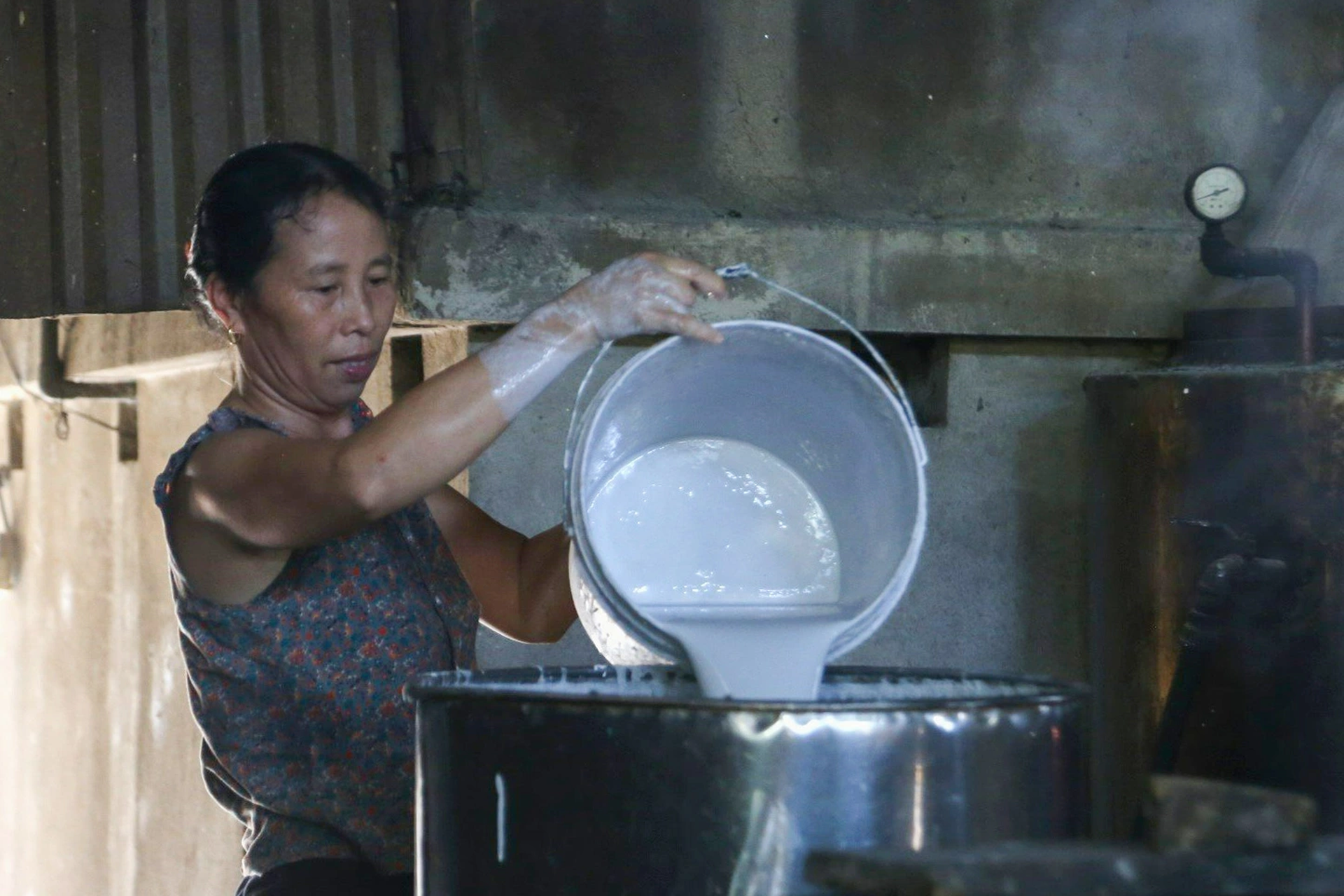
Dong Nhat rice paper is made from rice soaked overnight, ground finely, steamed, and sprinkled with black sesame seeds. The aroma of rustic rice and the fragrant, rich, fatty taste of sesame create the unique flavor of this rustic gift.
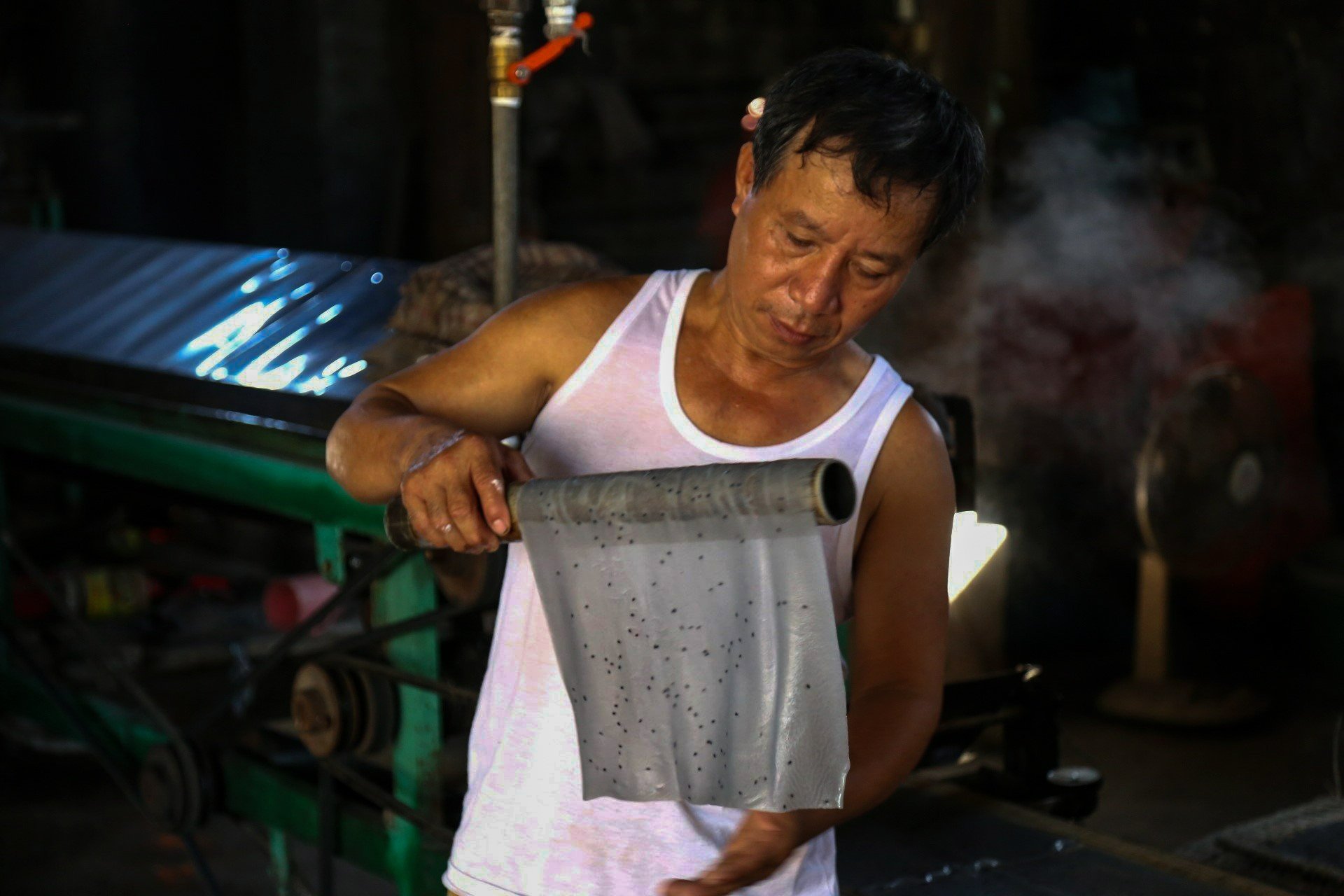
After being coated and steamed through the boiler system, the cake has a clear color, is chewy, has a fragrant smell and a light sweet taste of rice. On average, 1kg of rice can coat 20-25 rice paper, depending on the thickness and thinness according to customer requirements.
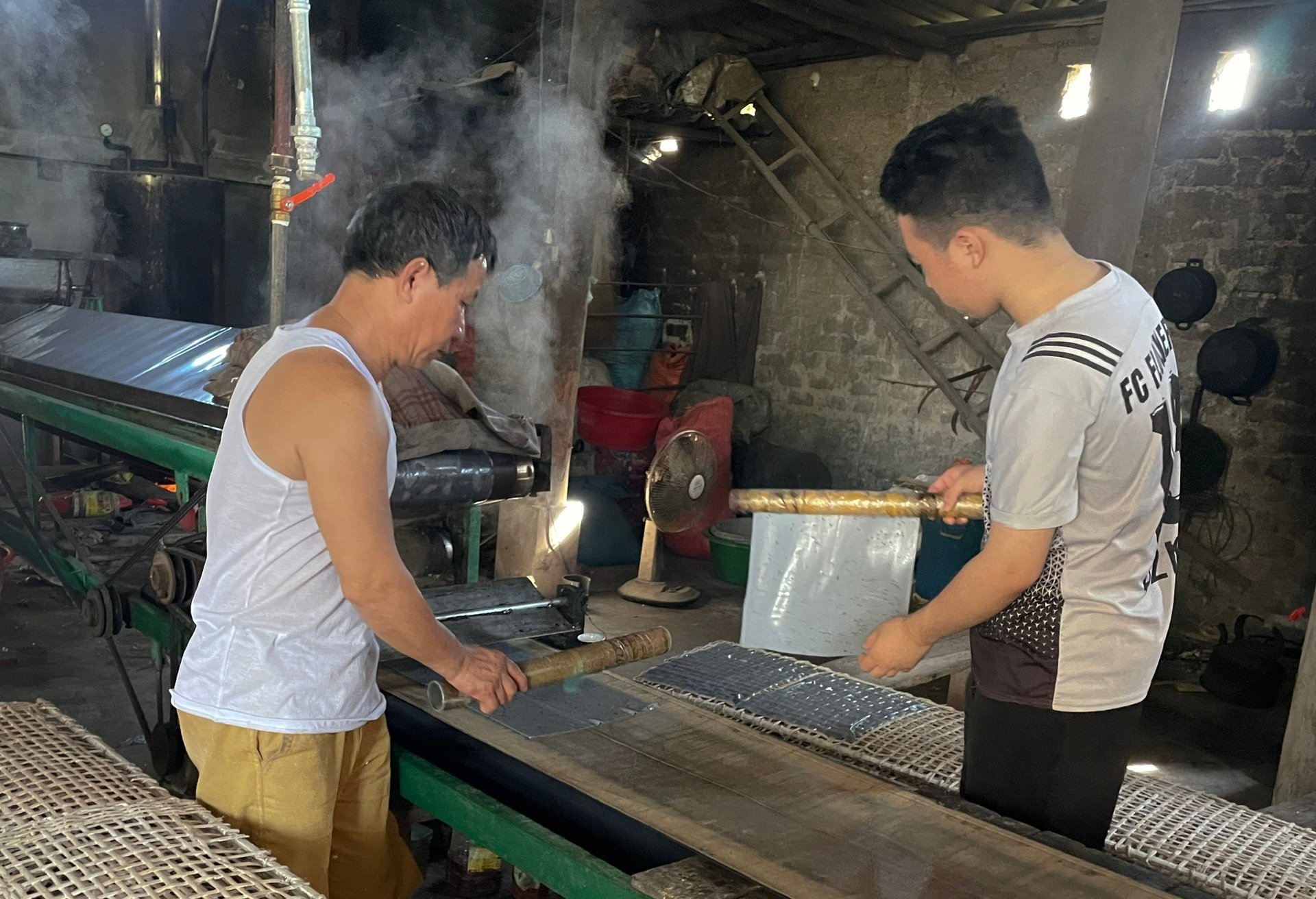
After being steamed, the rice paper is taken out and placed on a thin bamboo mat to dry. During the summer, people take advantage of the strong sunshine to increase production, store in stock, and supply the market during the cold and rainy weather.
Although the charcoal boiler has been replaced with an automatic coating system, the rice paper coating workers and the rice paper pouring workers are still sweating during the summer days in the "fire pan" of Nghe An.
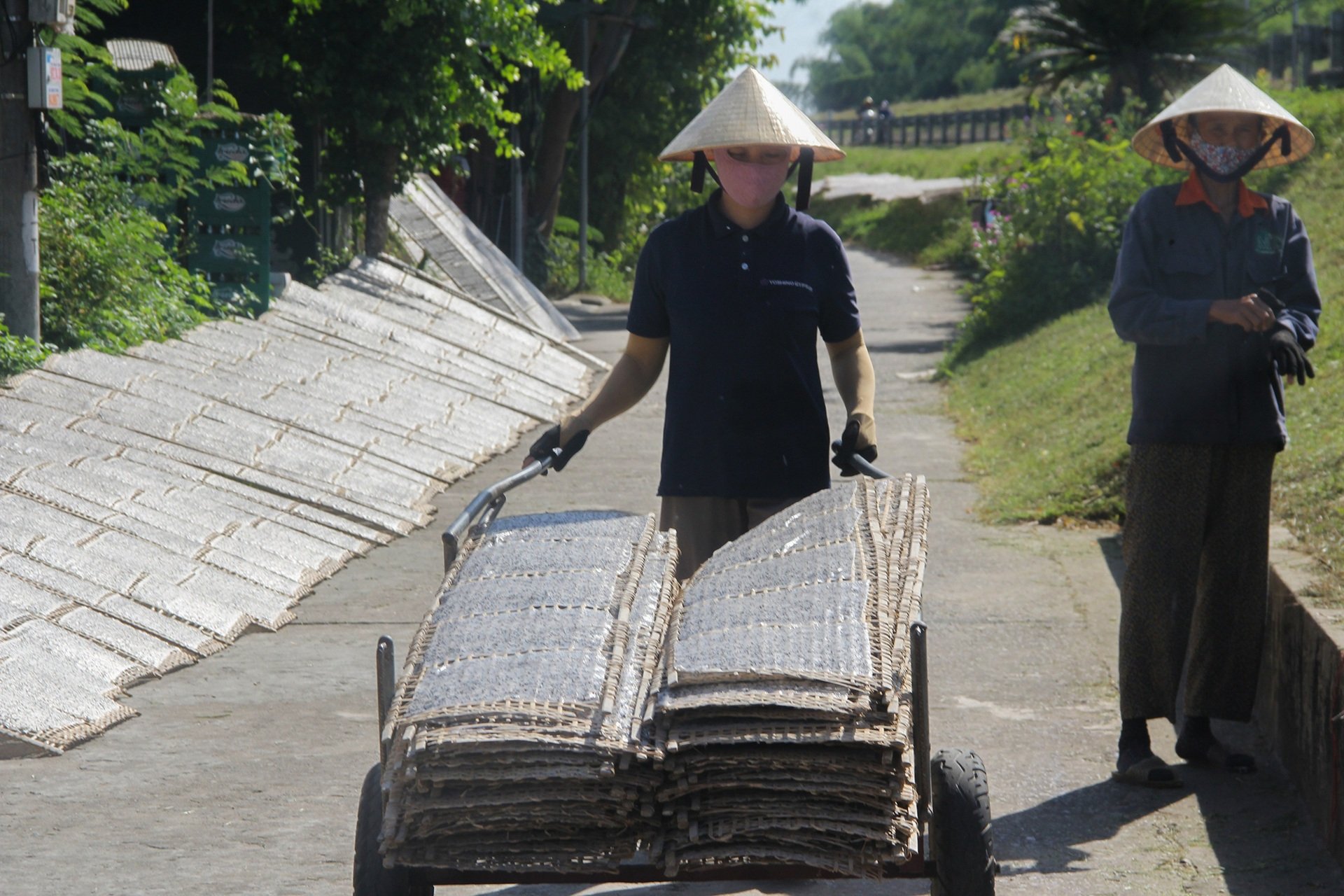
After being spread on bamboo mats, the rice paper is taken to the yard, yard or both sides of the Ta Lam dike to dry. In the sun, the rice paper will dry quickly, have a beautiful color and retain the delicious aroma of the ingredients.
"On this occasion, on average, our family makes 100kg of rice per day, equivalent to 2,000 cakes. The work usually starts at around 4am to dry in time for the sun," said Mr. Nguyen Dinh Khang (67 years old), owner of a rice paper factory in Dong Nhat village.
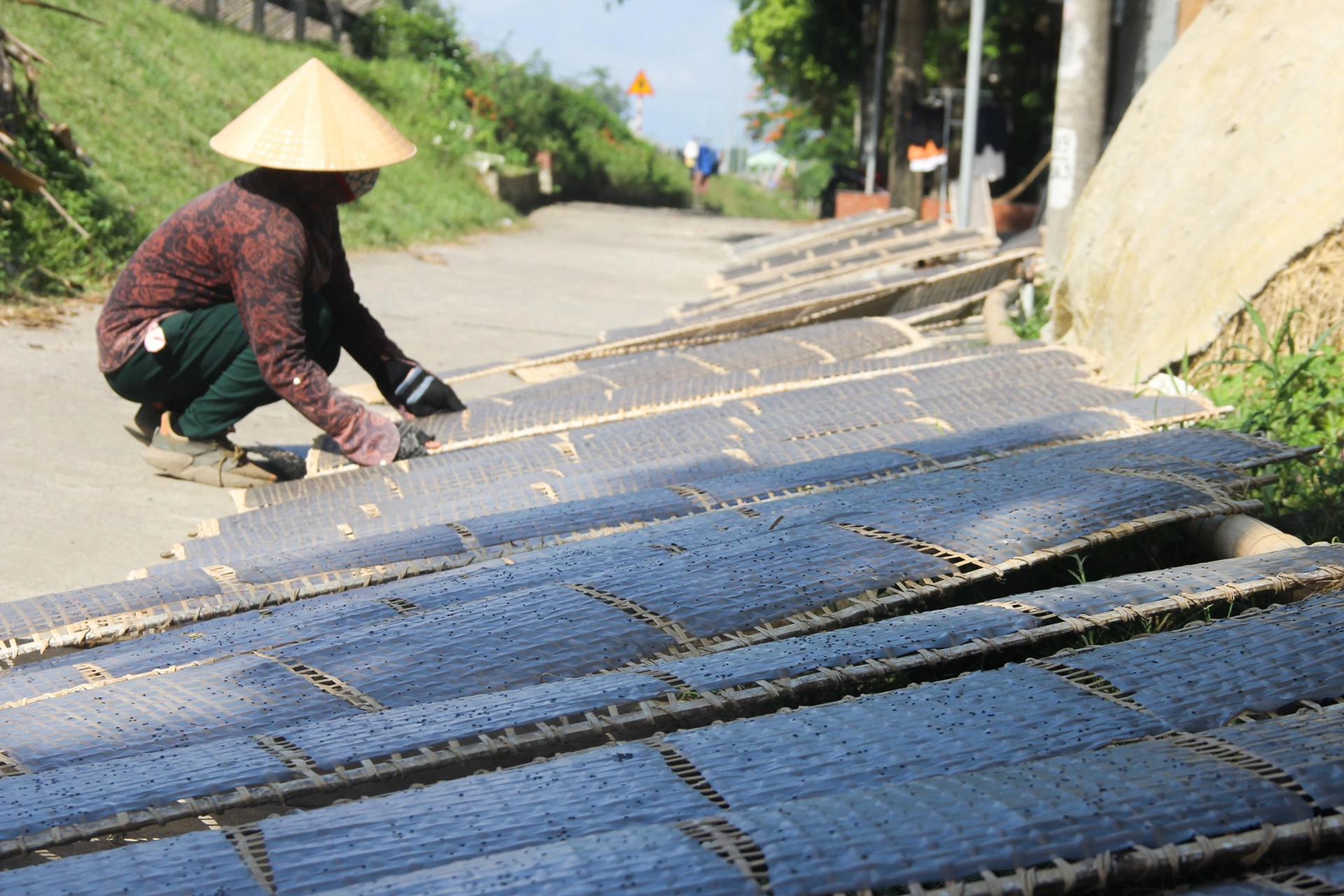
In a temperature of 37-39 degrees Celsius, rice paper needs to be dried for about 2 hours.
Although the cakes are only dried for 2 hours, for each batch of dough, the person drying them must work continuously to transport the cakes to the yard, flip and turn the cakes, and calculate the time to collect the cakes. On sunny days, the production households must hire more workers. Wages are paid daily, at over 200,000 VND/worker.
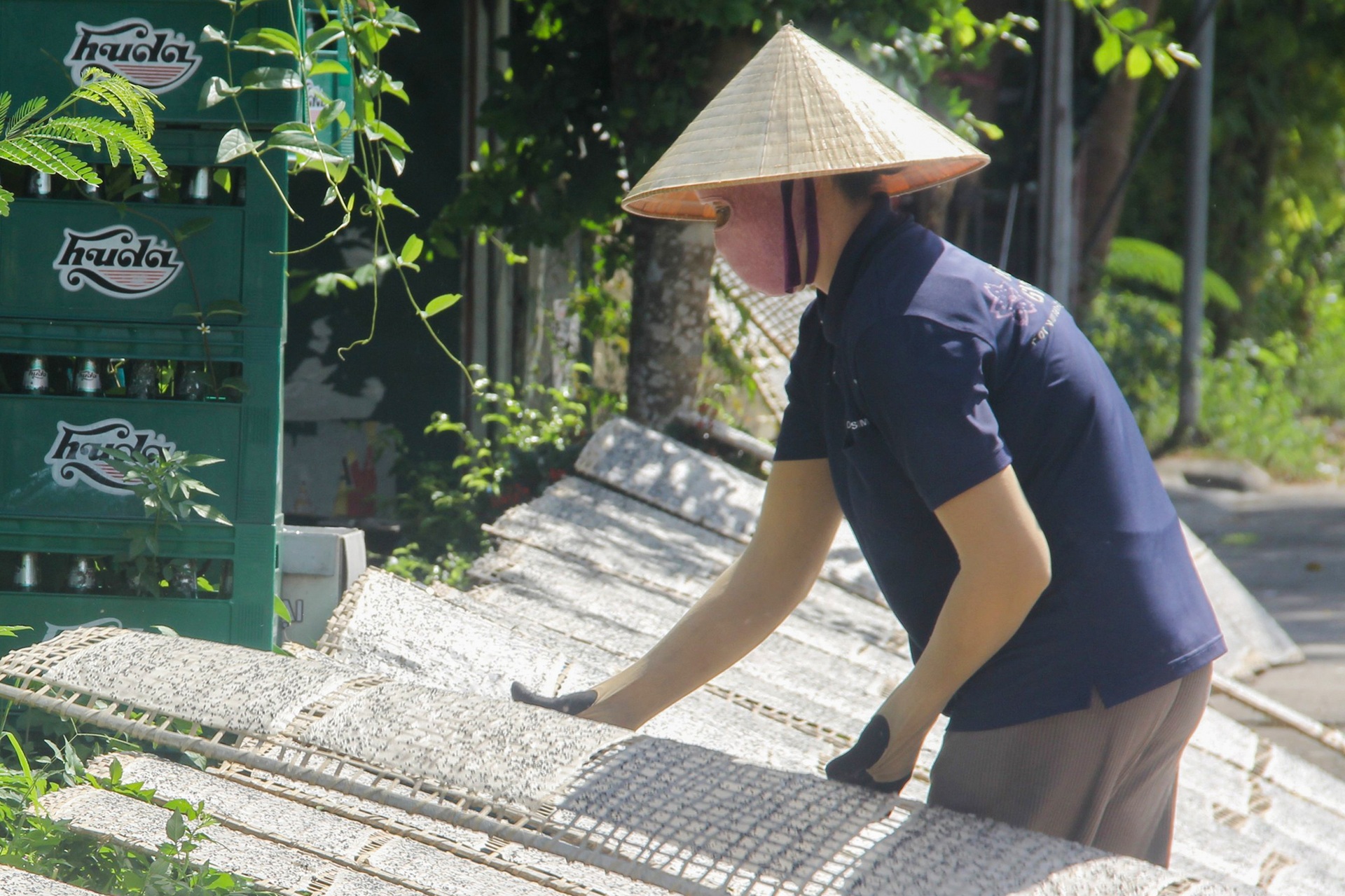
Workers wear hats, masks, and gloves to avoid the effects of the heat, especially during peak hours from 10am to 12pm every day, when the temperature in the drying yard reaches over 40 degrees Celsius.

Hot weather and dry southwest winds are ideal conditions for making rice paper. However, if over-dried, the rice paper will become hard, brittle, warped and lose its original flavor. Therefore, timing and assessing the dryness of the rice paper are extremely important.
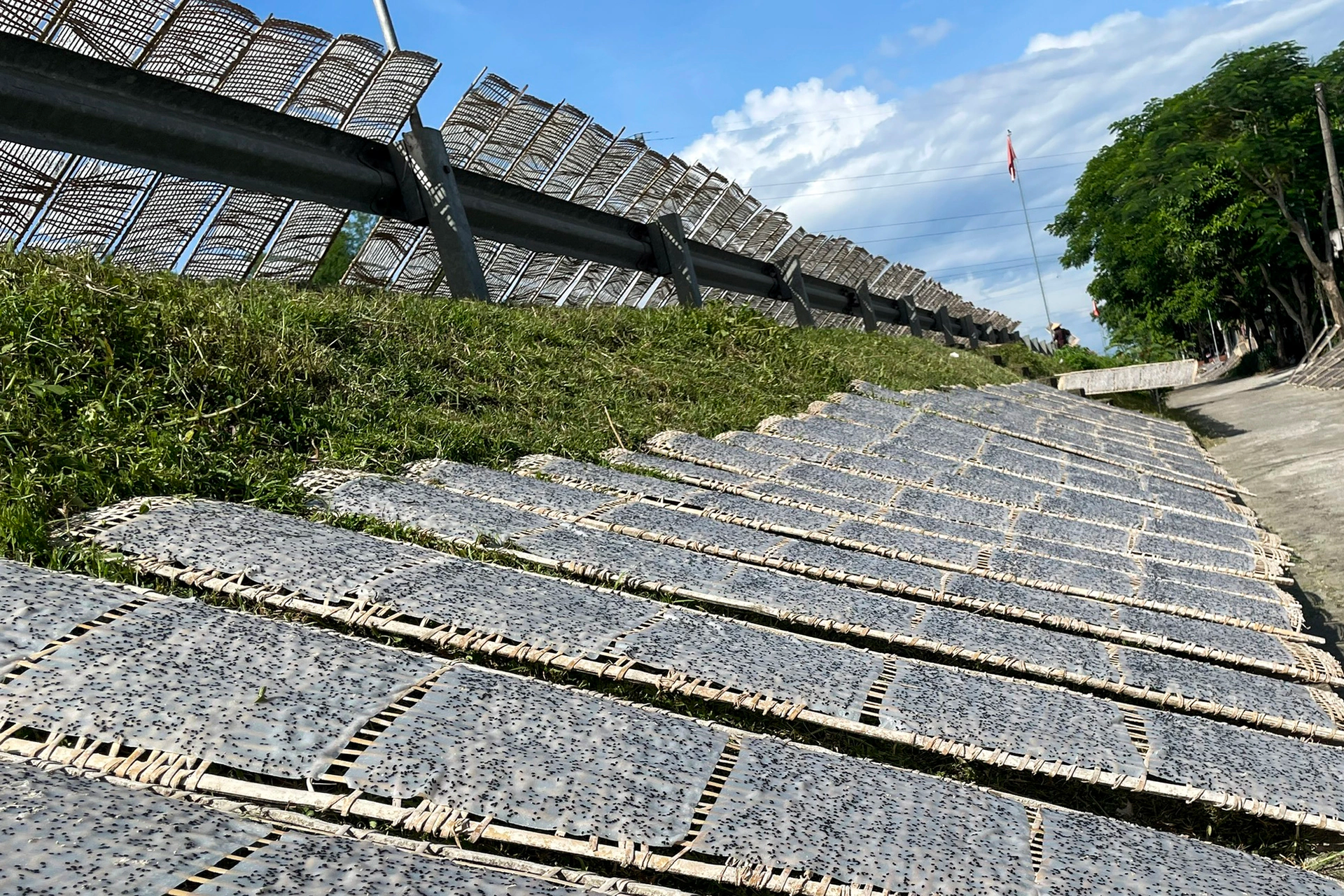
"Dong Nhat village rice paper products have built a brand and are exported to agents and tourist areas in Nghe An and Ha Tinh provinces.
Two years ago, the Dong Nhat rice paper market shrank due to the impact of the Covid-19 pandemic, forcing farmers to slow down production. Since the beginning of the year, production has shown signs of strong recovery.
Rice paper production contributes significantly to household income and creates jobs for local workers," said Mr. Le Khanh Quang, Chairman of Chau Nhan Commune People's Committee.
Content : Hoang Lam
Photo : Hien Quan
Source link


![[Photo] The 5th Patriotic Emulation Congress of the Central Inspection Commission](https://vphoto.vietnam.vn/thumb/1200x675/vietnam/resource/IMAGE/2025/10/27/1761566862838_ndo_br_1-1858-jpg.webp)

![[Photo] National Assembly Chairman Tran Thanh Man receives Chairman of the House of Representatives of Uzbekistan Nuriddin Ismoilov](https://vphoto.vietnam.vn/thumb/1200x675/vietnam/resource/IMAGE/2025/10/27/1761542647910_bnd-2610-jpg.webp)
![[Photo] Party Committees of Central Party agencies summarize the implementation of Resolution No. 18-NQ/TW and the direction of the Party Congress](https://vphoto.vietnam.vn/thumb/1200x675/vietnam/resource/IMAGE/2025/10/27/1761545645968_ndo_br_1-jpg.webp)








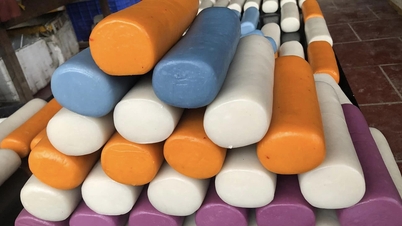

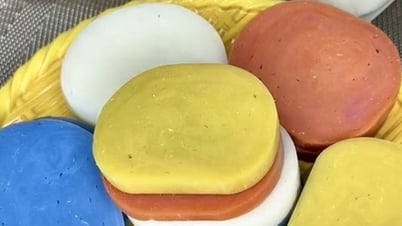



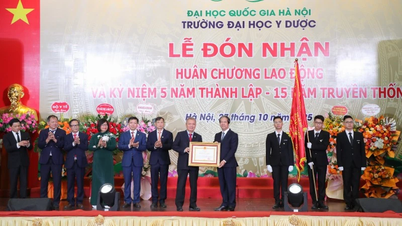

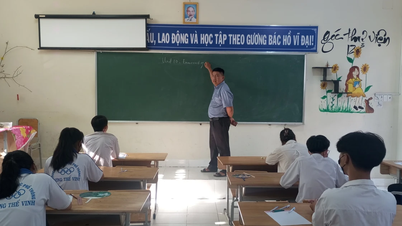



















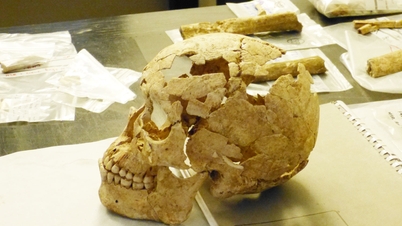
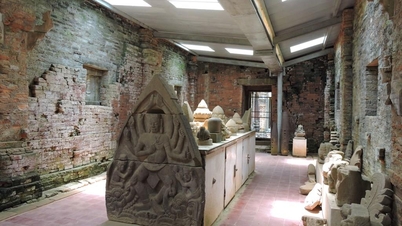















































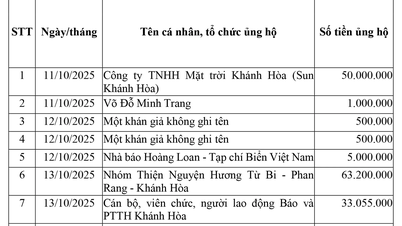

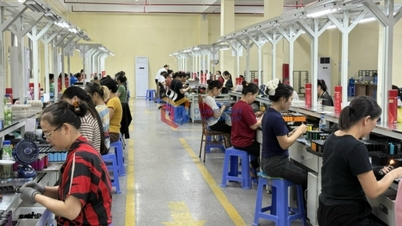





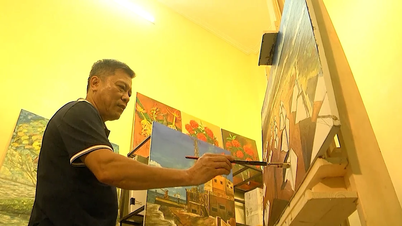












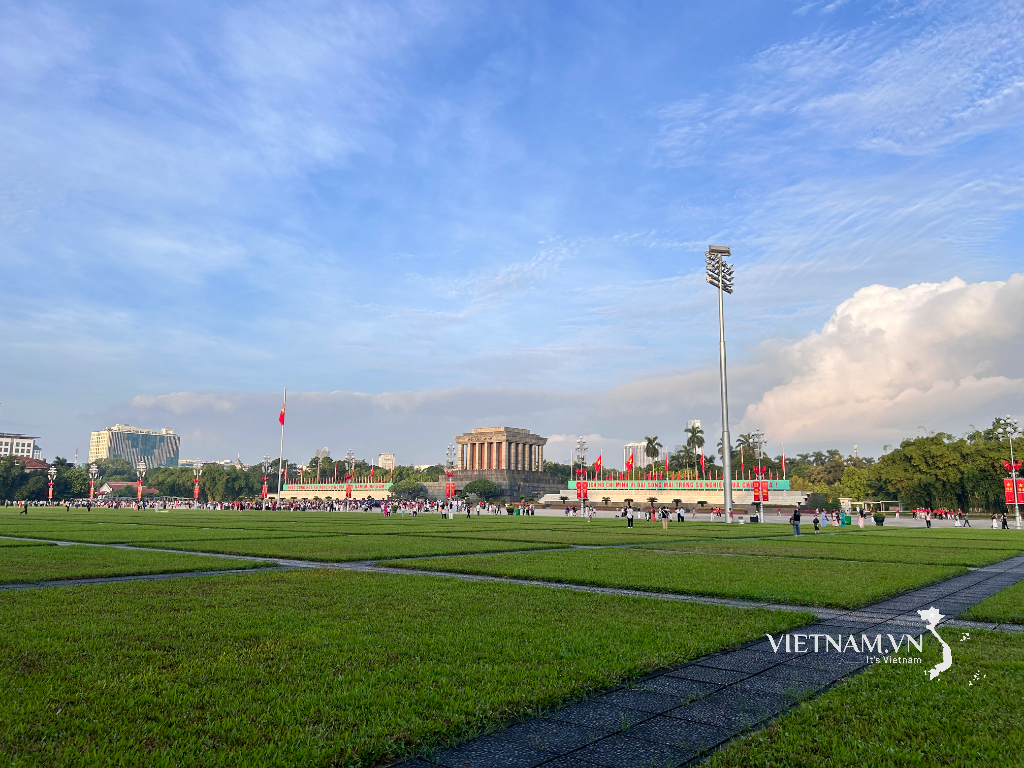



Comment (0)